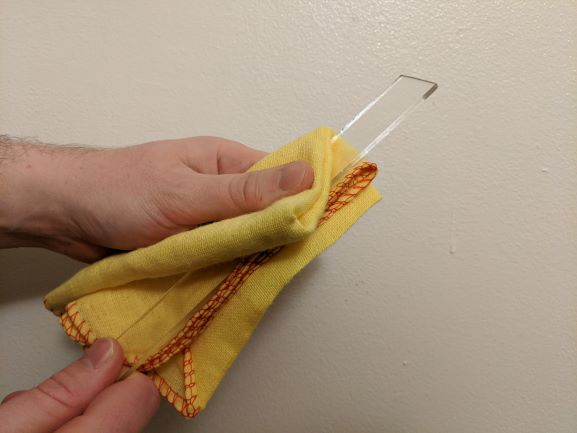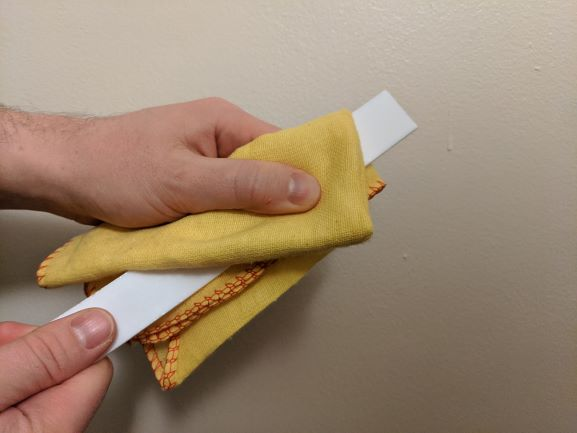All Textbook Topics - Electric Charge - Electric Charge Introduction - Friction is the force acting between insulators (such as plastic rods) when they are rubbed together which can cause negative charges to transfer and create charged objects
Friction is the force acting between insulators (such as plastic rods) when they are rubbed together which can cause negative charges to transfer and create charged objects
When two objects are rubbed together you get friction between them. Friction causes negative charges to transfer between the objects.
As an example, friction acts between you and non-conducting clothing, particularly plastic based clothing. This is why you can build up a charge with certain clothing, and then get a static electric shock when you discharge to a metal object.
The image below shows an example of friction being applied between a cloth and an acetate rod. In this case, negative charges transfer from the rod to the cloth, making the rod positively charged and the cloth negatively charged:

Here is an example of friction being applied between a cloth and a polythene rod. In this case, negative charges transfer from the cloth to the rod, making the rod negatively charged and the cloth positively charged:

All of our textbook pages have associated quizzes. Register for free to access them.
Register For Free